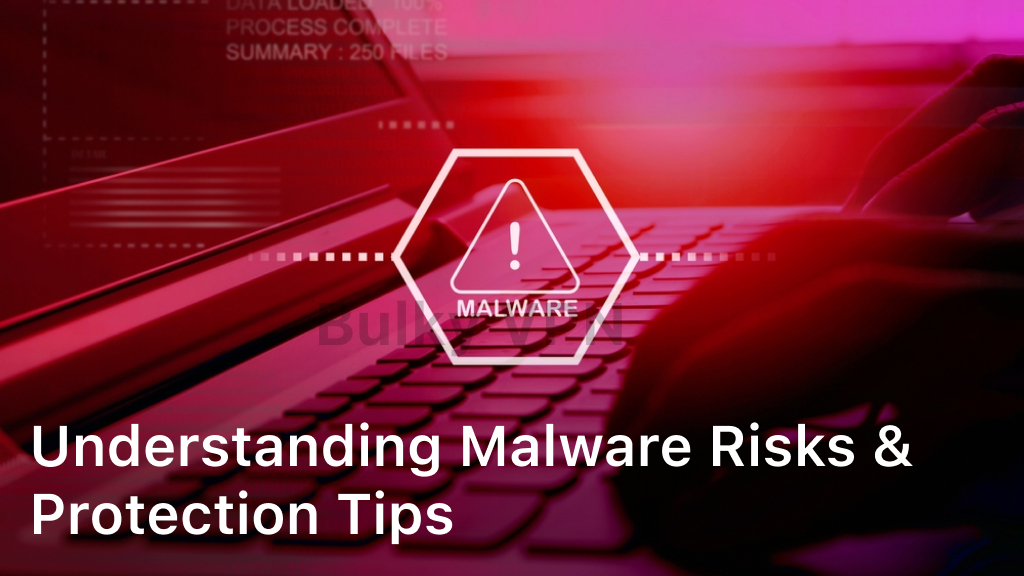
What is a Cyber Attack For Beginners – Discover the hidden world of cyber attacks! Learn what they are, how they happen, and stay one step ahead in the digital age. FAQs included!
In today’s digitally interconnected world, the term “cyber attack” has become all too common. From news headlines to casual conversations, it seems that the threat of a cyber attack looms over our digital lives.
But what exactly is a cyber attack? How does it happen? What types exist, and how can we protect ourselves against them? In this comprehensive guide, we’ll delve deep into the realm of cyber attacks, shedding light on these pressing questions.
What is a Cyber Attack?
A cyber attack is a deliberate and malicious attempt to exploit vulnerabilities in computer systems, networks, or digital devices. The primary objective of such attacks is to gain unauthorized access, steal sensitive information, disrupt operations, or cause harm to individuals, organizations, or governments.
These attacks can range from simple and unsophisticated to highly complex and well-coordinated, depending on the motivations and capabilities of the attacker.

What Happens During a Cyber Attack?
During a cyber attack, various techniques and tools are employed by attackers to compromise the target’s digital assets. These techniques can include:
- Malware: Malicious software, such as viruses, worms, Trojans, and ransomware, is used to infiltrate and compromise systems.
- Phishing: Attackers send deceptive emails or messages to trick individuals into revealing sensitive information or clicking on malicious links.
- Denial of Service (DoS) and Distributed Denial of Service (DDoS) Attacks: These attacks overwhelm a target’s server or network with an excessive amount of traffic, causing it to become inaccessible.
- Social Engineering: Attackers manipulate individuals into divulging confidential information or performing actions that compromise security.
What is an Example of a Cyber Attack?
One of the most infamous examples of a cyber attack is the Stuxnet worm, discovered in 2010. Stuxnet was designed to target supervisory control and data acquisition (SCADA) systems used in Iran’s nuclear program.
It exploited multiple vulnerabilities to manipulate the speed of centrifuges, causing physical damage and significantly slowing down Iran’s uranium enrichment process.
Stuxnet is often considered the first known cyber weapon and underscored the potential of cyber attacks to cause real-world consequences.
What Are the Four Common Types of Cyber Attack?
Cyber attacks come in various forms, each with its own characteristics and objectives. The four common types are:
- Malware Attacks: These involve the installation of malicious software on a victim’s device or network. Ransomware, a subtype of malware, encrypts a victim’s data and demands a ransom for its release.
- Phishing Attacks: Phishing attacks rely on deception. Attackers send fake emails or messages, often posing as legitimate entities, to trick recipients into divulging sensitive information or installing malware.
- Denial of Service (DoS) and Distributed Denial of Service (DDoS) Attacks: These attacks overwhelm a target’s resources, making services or websites unavailable to users. DDoS attacks use multiple compromised devices to amplify their impact.
- Social Engineering Attacks: These attacks exploit human psychology and trust. Techniques include pretexting, baiting, tailgating, and quid pro quo, all aimed at manipulating individuals into compromising security.
How Will We Know if We Are Under Cyber Attack?
Detecting a cyber attack can be challenging because attackers often strive to remain covert. However, some common indicators include:
- Unusual system behavior, such as unexpected crashes or slowdowns.
- Unrecognized network traffic or connections.
- Unauthorized access to sensitive data or accounts.
- Anomalies in system logs and security alerts.
To detect cyber attacks promptly, organizations often employ security tools and monitoring systems that analyze network traffic and system behavior for signs of compromise.
How Long Does a Cyber Attack Take?
The duration of a cyber attack can vary widely depending on its complexity and the attacker’s goals. Some attacks, such as DDoS attacks, can occur in a matter of minutes and may only last for a short period. In contrast, more sophisticated attacks, like data breaches or espionage, can persist undetected for weeks, months, or even years.
It’s important to note that the longer an attack remains undetected, the more damage it can cause. Timely detection and response are critical for mitigating the impact of a cyber attack.
What happens during a cyber attack?
During a cyber attack, a series of intricate and often covert steps take place, as malicious actors attempt to exploit vulnerabilities in computer systems, networks, or digital devices for various nefarious purposes.
Understanding what transpires during a cyber attack is essential for recognizing the warning signs and taking measures to mitigate or prevent the damage. Here is a more detailed exploration of what happens during a cyber attack:
- Reconnaissance and Target Selection: The cyber attacker begins by selecting a target, whether it’s an individual, organization, or government entity. They conduct reconnaissance to gather information about the target, such as identifying weaknesses, potential entry points, and valuable assets. This phase may involve scanning websites, analyzing social media profiles, and searching for vulnerabilities.
- Initial Access: Once the attacker has identified a vulnerability or weakness, they attempt to gain initial access. This may involve exploiting software vulnerabilities, using stolen credentials, or tricking individuals into clicking on malicious links or downloading infected files. Phishing emails, for instance, are commonly used to trick users into unwittingly providing access.
- Privilege Escalation: After gaining initial access, the attacker often seeks to escalate their privileges within the compromised system. They aim to acquire administrator-level access, which grants them more control over the target’s resources and data. Privilege escalation techniques can include exploiting unpatched software, taking advantage of misconfigurations, or using known vulnerabilities.
- Lateral Movement: With elevated privileges, the attacker moves laterally through the network or system, attempting to gain access to additional devices, servers, or databases. They may exploit trusted connections between devices or use stolen credentials to expand their foothold within the target environment. The goal is to reach valuable data or critical systems.
- Data Exfiltration or Manipulation: Depending on their motives, attackers may either exfiltrate sensitive data or manipulate it for their gain. Data exfiltration involves stealing valuable information, such as personal records, financial data, or intellectual property. In contrast, data manipulation may involve altering records, injecting malicious code, or causing system malfunctions.
- Persistence: To maintain long-term access, attackers often establish persistence mechanisms. These can include creating hidden backdoors, installing rootkits, or implanting persistent malware that ensures their continued presence even after detection or remediation efforts.
- Covering Tracks: Skilled attackers take steps to cover their tracks, erasing or altering logs and evidence of their activities. They may also attempt to misdirect investigators by planting false clues or attributing the attack to another party.
- Achieving Objectives: The attacker’s ultimate objectives vary widely. It could be financial gain through ransomware, espionage, information theft, or simply causing disruption for political or ideological reasons. Their actions are guided by their motives, whether they aim to steal data, compromise critical infrastructure, or manipulate public opinion.
- Exit Strategy: In some cases, attackers may choose to leave the compromised environment once their objectives are met. This can involve erasing their presence, leaving behind booby traps, or maintaining a dormant state for future use.
- Detection and Response: Ideally, the attack is detected during its early stages or even before it starts causing damage. Effective cybersecurity measures include real-time monitoring, intrusion detection systems, and incident response plans to identify and respond to cyber threats promptly.
Causes of Cyber Attack
Cyber attacks can have a variety of causes, and understanding these causes is essential for mitigating and preventing such attacks. Here are some of the primary causes of cyber attacks:
- Financial Gain
One of the most common motivations behind cyber attacks is financial gain. Attackers may seek to steal sensitive financial information, such as credit card details, bank account numbers, or cryptocurrency wallets. Ransomware attacks, where the attacker encrypts the victim’s data and demands a ransom for its release, are a prime example of attacks motivated by financial gain.
- Espionage and Nation-State Activities
Nation-states and intelligence agencies engage in cyber attacks to gather intelligence, gain a competitive advantage, or disrupt the operations of rival nations. These attacks can involve sophisticated hacking techniques and are often highly covert.
- Hacktivism
Hacktivism is a form of cyber attack driven by political or ideological motives. Activist groups or individuals may target government institutions, corporations, or organizations they perceive as unethical or oppressive. Hacktivists aim to expose wrongdoing, raise awareness, or disrupt operations.
- Cyber Warfare
In some cases, cyber attacks are used as part of military operations or conflicts between nations. These attacks can be highly sophisticated and are aimed at disrupting critical infrastructure, communication systems, or military capabilities.
- Financial Fraud
Cybercriminals engage in financial fraud through various means, including online scams, phishing, and identity theft. They exploit individuals’ trust or lack of cybersecurity awareness to steal money or commit fraud.
- Data Theft
Valuable data, such as intellectual property, trade secrets, or customer databases, can be a target for cyber attackers. Stolen data may be sold on the dark web or used for competitive advantage.
- Insider Threats
Sometimes, cyber attacks originate from within an organization. Disgruntled employees, contractors, or business partners with access to sensitive systems and data can intentionally or inadvertently cause security breaches.
- Software Vulnerabilities
Vulnerabilities or weaknesses in software and hardware systems are often exploited by cyber attackers. These vulnerabilities can result from coding errors, misconfigurations, or outdated software that lacks security patches.
- Human Error
Human error remains a significant cause of cyber attacks. Employees and individuals may inadvertently compromise security by falling for phishing scams, using weak passwords, or failing to follow security best practices.
- Supply Chain Vulnerabilities
Organizations are increasingly interconnected through supply chains. Cyber attackers may target suppliers or service providers as a means to compromise a larger, more lucrative target.
- Unpatched Systems
Failure to apply security patches and updates in a timely manner leaves systems vulnerable to known exploits. Attackers actively search for unpatched systems to exploit.
- Inadequate Cybersecurity Measures
Organizations and individuals who neglect cybersecurity measures or fail to implement robust security practices are more susceptible to cyber attacks. This includes weak password policies, lack of antivirus software, and insufficient network security.
- Social Engineering
Attackers use social engineering techniques to manipulate individuals into revealing sensitive information or taking actions that compromise security. This can include pretexting, baiting, tailgating, and phishing.
It’s important to note that cyber attacks can result from a combination of these factors. Successful cyber attackers often exploit multiple vulnerabilities and use a variety of tactics to achieve their goals.
As cyber threats continue to evolve, staying vigilant, implementing strong cybersecurity practices, and educating individuals and employees about potential risks are critical steps in reducing the likelihood and impact of cyber attacks.
How to Prevent Cyber Attacks
Preventing cyber attacks requires a proactive and comprehensive approach to security. Here are some key steps and best practices to help protect your systems, data, and online activities:
Use Strong Passwords
- Create complex passwords that include a combination of letters, numbers, and special characters.
- Use unique passwords for each online account.
- Consider using a reputable password manager to securely store and manage your passwords.
Enable Multi-Factor Authentication (MFA)
- Enable MFA wherever possible, especially for critical accounts like email and banking.
- MFA adds an extra layer of security by requiring multiple forms of verification, such as a password and a temporary code sent to your mobile device.
Keep Software and Systems Updated
- Regularly update operating systems, software, and applications to patch known vulnerabilities.
- Enable automatic updates whenever possible to ensure you’re always running the latest, most secure versions.
Install Reliable Antivirus and Anti-Malware Software
- Use reputable antivirus and anti-malware software to protect against viruses, malware, and other threats.
- Keep the software up to date and perform regular scans.
Practice Safe Email Habits
- Be cautious of email attachments and links, especially from unknown sources.
- Verify the sender’s identity before opening suspicious emails.
- Avoid clicking on links in emails that ask for sensitive information.
Educate Yourself and Your Team
Train yourself and your employees or family members about cybersecurity best practices.
Teach them to recognize common social engineering tactics, such as phishing emails and fake websites.
Secure Your Network
- Use strong encryption for your Wi-Fi network and change default router passwords.
- Regularly update router firmware to protect against known vulnerabilities.
Backup Your Data
- Regularly back up important data to an external or cloud-based storage solution.
- Ensure backups are automated and stored securely.
Implement Access Control
- Limit user access to only what is necessary for their job or role.
- Use strong, role-based access controls to restrict unauthorized access to sensitive data.
Regularly Monitor and Audit
- Set up monitoring systems to detect unusual or suspicious activities on your network.
- Conduct regular security audits to identify weaknesses and vulnerabilities.
Create an Incident Response Plan
- Develop a plan for responding to security incidents, including data breaches.
- Ensure all relevant personnel are aware of the plan and their roles.
Stay Informed
- Keep up to date with the latest cybersecurity threats and trends.
- Subscribe to security newsletters, follow reputable security blogs, and participate in cybersecurity forums.
Encrypt Sensitive Data
- Use encryption tools and protocols to protect sensitive data, both in transit and at rest.
- Encrypt emails containing sensitive information.
Secure Mobile Devices
Apply security measures, such as PINs or biometric locks, to your mobile devices.
Install security apps and keep your mobile OS updated.
Collaborate with Security Experts
Consider working with cybersecurity professionals or consulting firms to assess and improve your security posture.
Remember that cybersecurity is an ongoing process.
Threats evolve, so your defenses must evolve with them. By following these best practices and staying vigilant, you can significantly reduce the risk of falling victim to cyber attacks.
FAQs
What is an example of a cyber attack?
One notable example is the Stuxnet worm, which targeted Iran’s nuclear program by manipulating centrifuges. This cyber attack caused physical damage and slowed down Iran’s uranium enrichment process.
What are the four common types of cyber attack?
The four common types of cyber attacks are malware attacks (including ransomware), phishing attacks, denial of service (DoS) and distributed denial of service (DDoS) attacks, and social engineering attacks.
How will we know if we are under cyber attack?
Signs of a cyber attack include unusual system behavior, unauthorized access, unrecognized network traffic, and anomalies in system logs. Security tools and monitoring systems are used to detect these signs.
How long does a cyber attack take?
The duration of a cyber attack varies based on its complexity and goals. Some attacks can be quick, lasting minutes, while others, especially sophisticated ones, may go undetected for weeks, months, or even years.
In an age where our digital presence is an integral part of our lives, understanding cyber attacks and their implications is crucial. By staying informed and taking appropriate precautions, individuals and organizations can better protect themselves against this evolving threat landscape.





